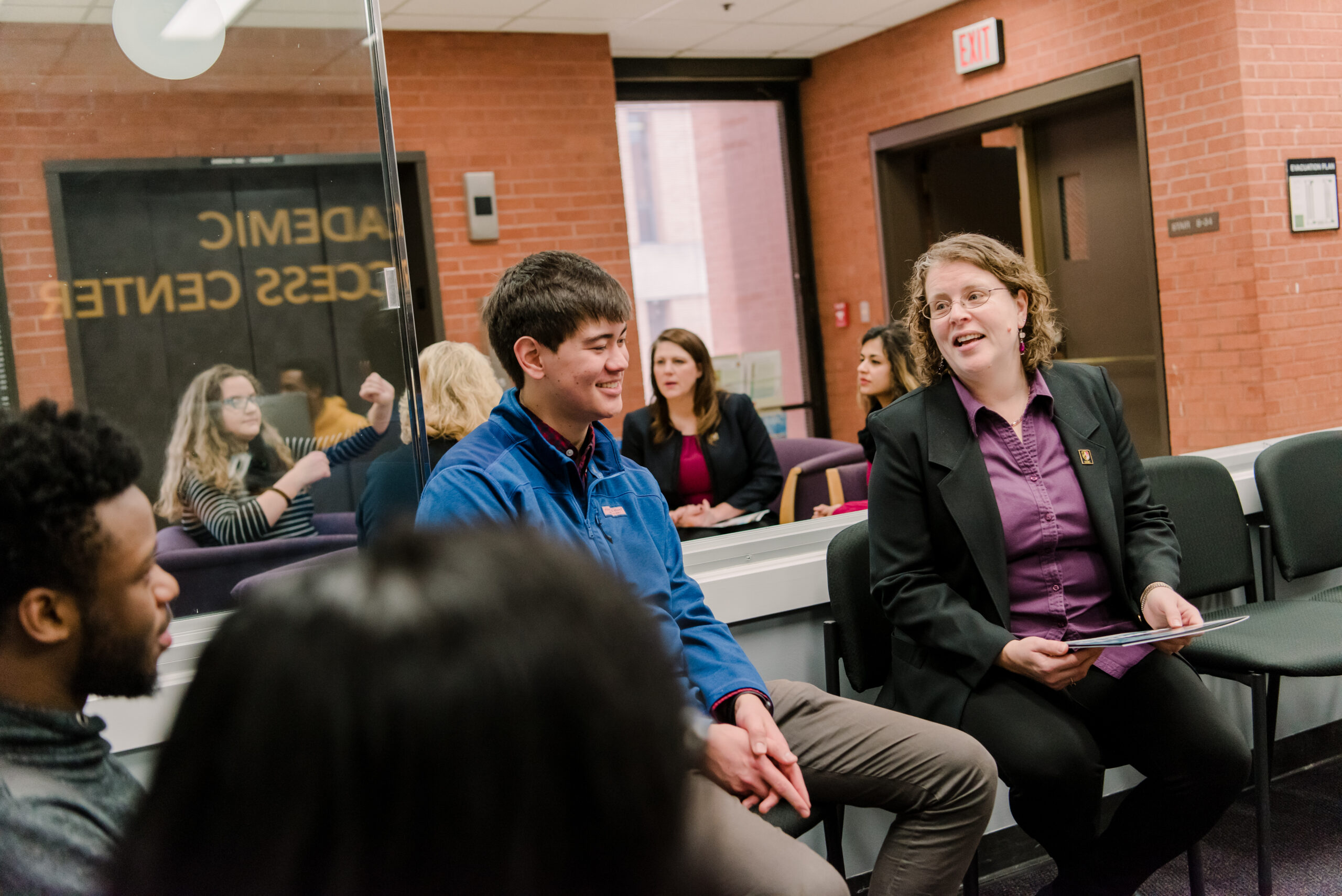Reaching struggling students before even they know they have a problem is key to “academic advocacy,” an emerging high-touch advising model that prioritizes retention and completion.
Faculty referrals and the close tracking of attendance and other data drive the student success initiative, which was launched at the University of South Florida prior to the pandemic and further developed in a partnership with the University of Maryland Baltimore County. “At an institution of our size, we run the risk of not helping students when they need it most,” says Paul Dosal, the University of South Florida’s vice president for student success. “Our goal has always been to provide students with the right support at right time but once they get a D on a mid-term, it might be too late. We don’t want support personnel to wait in their office for students to come to them. Too many students don’t reach out for help.”
South Florida’s staff of academic advocates has grown to a dozen this school year from just three in about 10 years ago. They serve as “care managers”—rather than case managers—who can connect students to all of the university’s sometimes scattered support services, including financial aid, peer tutoring and counseling, Dosal says.
The advocates are typically assigned to specific cohorts, such as incoming first-year students.
“I’m reluctant to credit all of our recent gains in credits and graduations rates to them, but they have contributed substantially,” he says. “Our system doesn’t work without them.”
‘We don’t want students to feel called out’
The goal for academic advocacy at the University of Maryland Baltimore County is not only to retain students but to help them graduate as quickly as possible, says Delana Gregg, director of academic learning resources, assessment and analysis at the school’s Academic Success Center.
Part of an advocate’s job is to build partnerships with support services across the campus to ensure wide collaboration when a student needs assistance. They are also charged with keeping communications positive when they reach out to a student who has been referred by a faculty member.
More from UB: Low-income students at these colleges tend to earn more in the long run
“We don’t want students to feel called out,” Gregg says. “It’s always positive language, like ‘Hi, I’m your academic advocate, my job is to remove barriers and help you succeed.'”
The advocates serve as a hub for support services—from academic advising to residential life—so a student isn’t shuffled between other offices. They also often open students’ eyes to services they didn’t know were available, can help students on the verge of graduation the credits they need to complete, and even work with the department to waive minor requirements that are standing in the way.

“Sometimes a student doesn’t know what they need,” Gregg says. “I was a first-generation student and I didn’t know what these offices were called. I didn’t know they existed.”
The university’s graduation rate has risen above 70% since the advocates began their work.
“During this unusual pandemic time where so many students are struggling, having that one point of contact where any undergraduate can come and say ‘This isn’t working, I need help,’ has been amazing for our campus,” Gregg says. “It has taken a lot of the load off of faculty and staff.”
How to bring advocates to your campus
UMBC’s academic care teams, which comprise departments such as students affairs, residential life, the counseling center and financial aid, will also collaborate when a student is experiencing multiple challenges, says Katharine Cole, UMBC’s vice provost and dean of undergraduate academic affairs.
Some of the advocates’ biggest successes have been helping students overcome the final few hurdles to cross the finish line. “At first, it was amazing to me that so many students were so close to graduation and just not taking the right courses,” Cole says. “But now you have an individual who says, ‘I am in your corner. Let’s get figure out exactly what you need.”
Institutions looking to start their own advocacy programs have to start with the belief that every student can succeed and that once barriers are identified, staff can engage with the students to find solutions, says Leslie Tod, director of the University of South Florida’s Office of Academic Advocacy. “Every institution has to acknowledge that they are a complex structure that inherently creates barriers for its students,” she says. “Once you accept that you can move on from there.”







